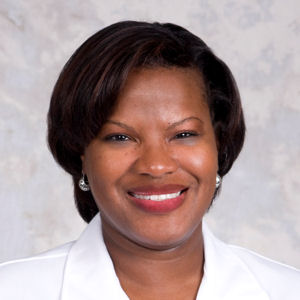Combined Internal Medicine and Pediatrics
The Discipline
Combined internal medicine and pediatrics (usually referred to as Med-Peds) residency programs provide concurrent, dual training in both internal medicine and pediatrics, and allows eligibility for board certification and independent practice in both disciplines.
With their in-depth knowledge of both internal medicine and pediatrics, Med-Peds physicians can synthesize their clinical knowledge into care for patients spanning the spectrum from birth until death. They encounter a wide variety of patients and clinical scenarios: high-risk deliveries, newborn assessments, well-child visits, common childhood illnesses, acute and longitudinal care of children and adult patients, and adult and pediatric intensive care. Because of their dual training, Med-Peds physicians are uniquely qualified to care for adolescent patients, particularly children with complex and chronic conditions as they transition to adulthood.
A frequently asked question regards the differences between Med-Peds and family medicine training and practice. Although both Med-Peds and family physicians are trained to care for both children and adults, Med-Peds training is longer (4 years instead of 3), includes more in-depth training in both internal medicine and pediatrics, does not include obstetrics/gynecology or surgical training, and allows for dual board certification. In practice, Med-Peds physicians are generally more narrowly trained to care for both healthy but also very complicated children and adults in great depth, while family physicians are trained to attend to the broader needs of a family in both health and sickness, with a clear focus on the primary care of the family unit.
Physicians practicing Med-Peds see both adults and children in a wide variety of practice settings and practice styles. Practice settings range from ambulatory primary care to hospitalist practice. Although Med-Peds-trained physicians are able to see both adult and pediatric patients, many focus in areas where their training is particularly valuable, such as management of younger patients with significant illness as they transition to adult care. Med-Peds physicians are also eligible to pursue additional (fellowship) training in either pediatrics or internal medicine.
Training
Med-Peds trainees receive the same in-depth training as their categorical internal medicine and pediatrics colleagues. However, because of a shared knowledge base, a Med-Peds residency is streamlined into 4 years of residency training. Residents alternate between their internal medicine and pediatric rotations every 3-4 months, depending on the residency program. By the end of 4 years, residents will have completed core requirements for both categorical internal medicine and categorical pediatrics, including some elective time.
Once residency training is successfully completed, trainees are eligible for certification by the American Board of Internal Medicine and the American Board of Pediatrics
For those who choose to pursue additional training beyond residency, physicians certified in Med-Peds are eligible for fellowship training in either or both internal medicine and pediatrics. Because of their dual training, some combined internal medicine and pediatrics subspecialty fellowships can be streamlined via special arrangements with the fellowship directors and the certification boards.
Professional Societies
- American College of Physicians
- American Academy of Pediatrics
- Society of General Internal Medicine
- National Med-Peds Residents’ Association

Stefanie Brown, MD, FACP, FAAP, Med–Peds for Life (#MP4L)
Internal Medicine Residency Program Director
University of Miami/Jackson Health System

